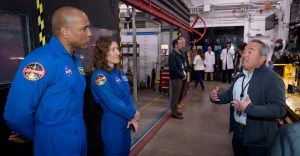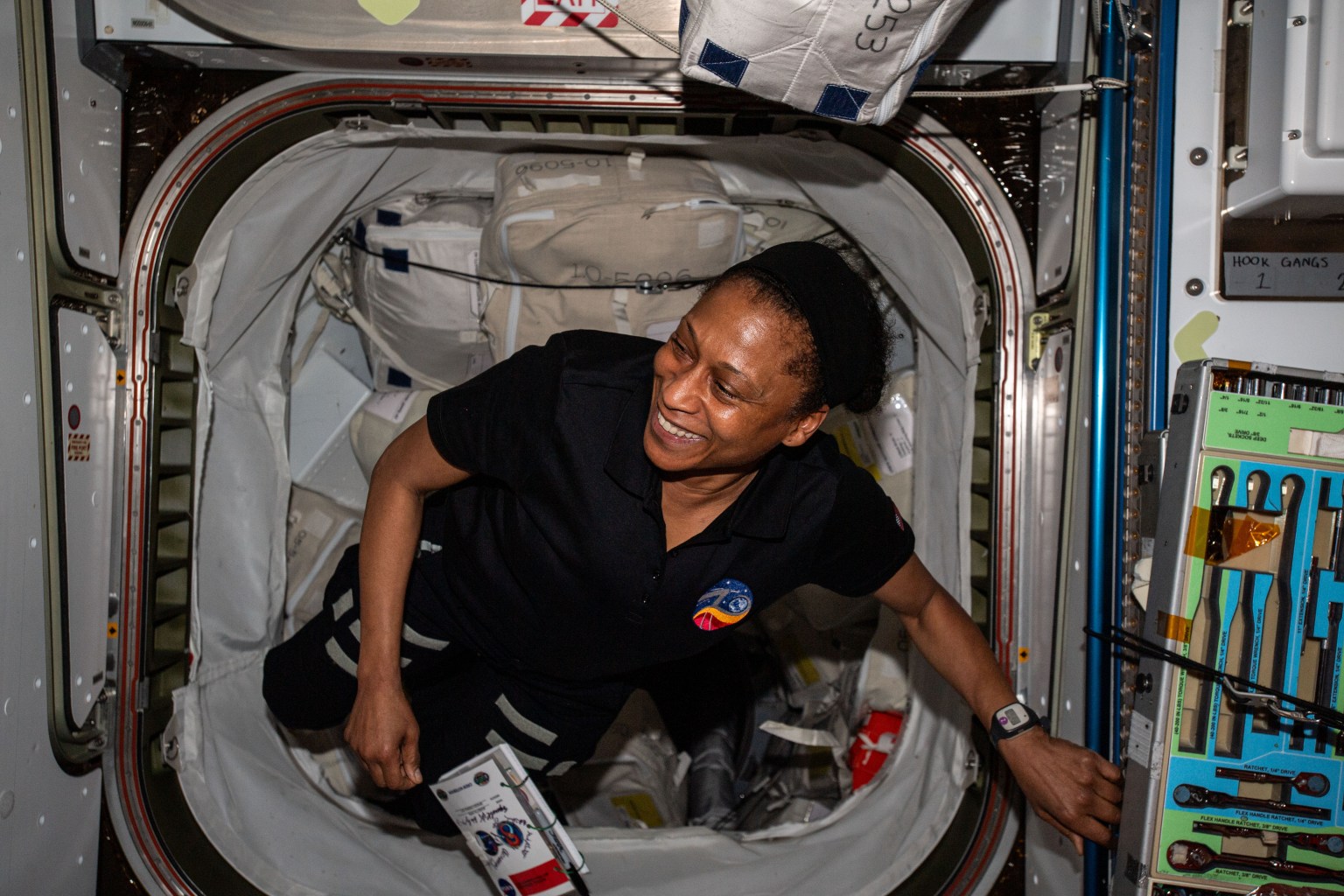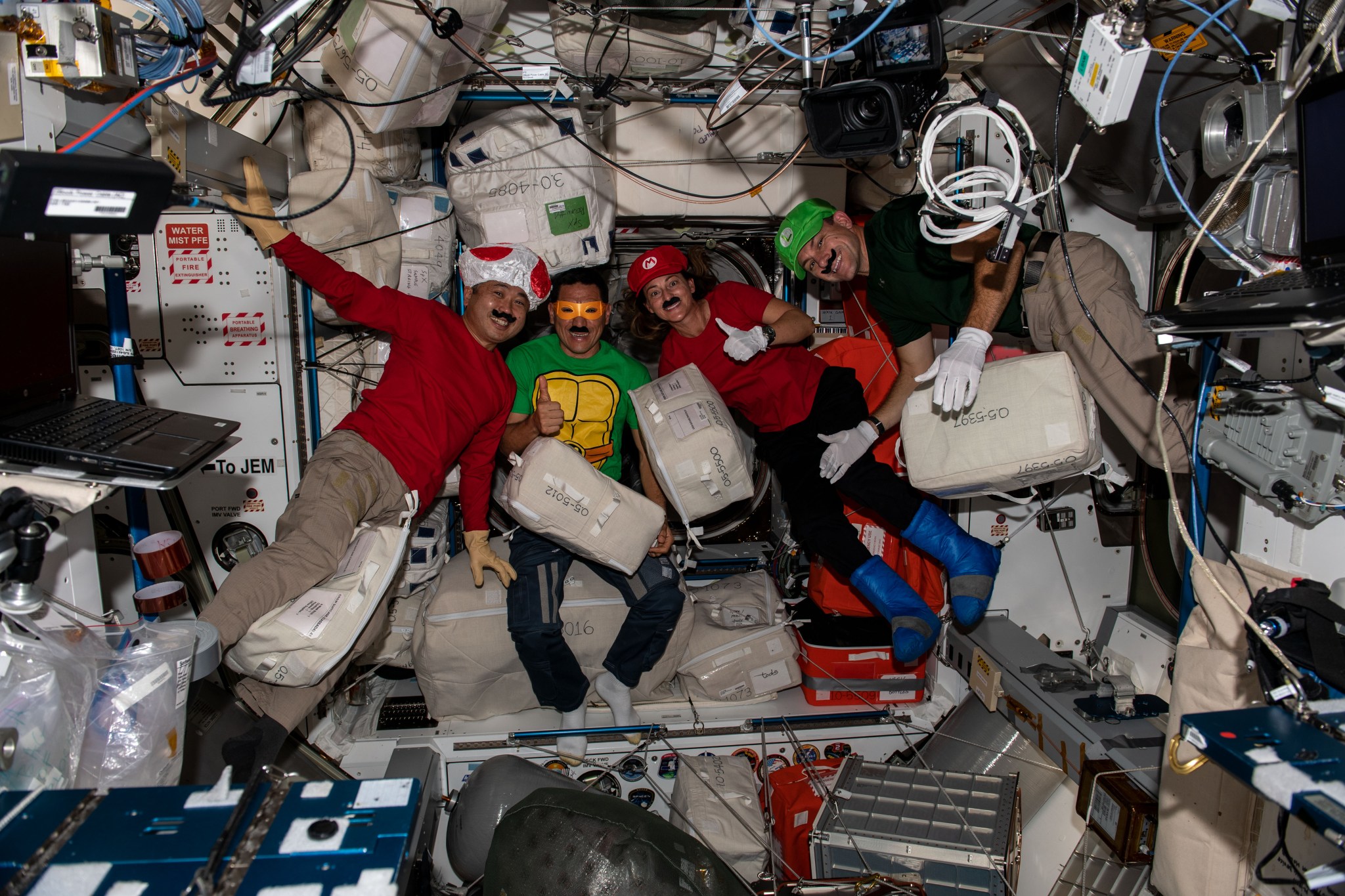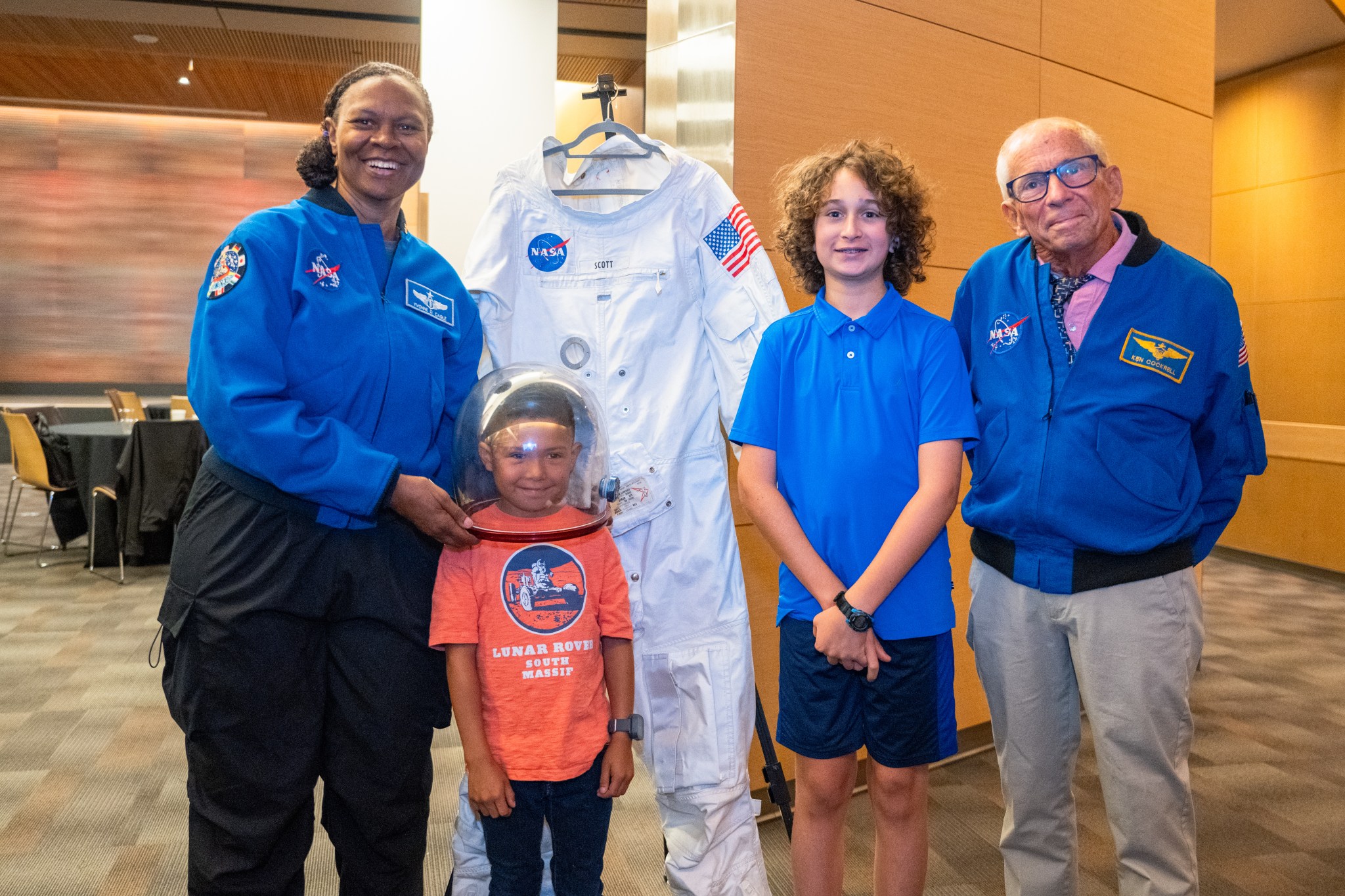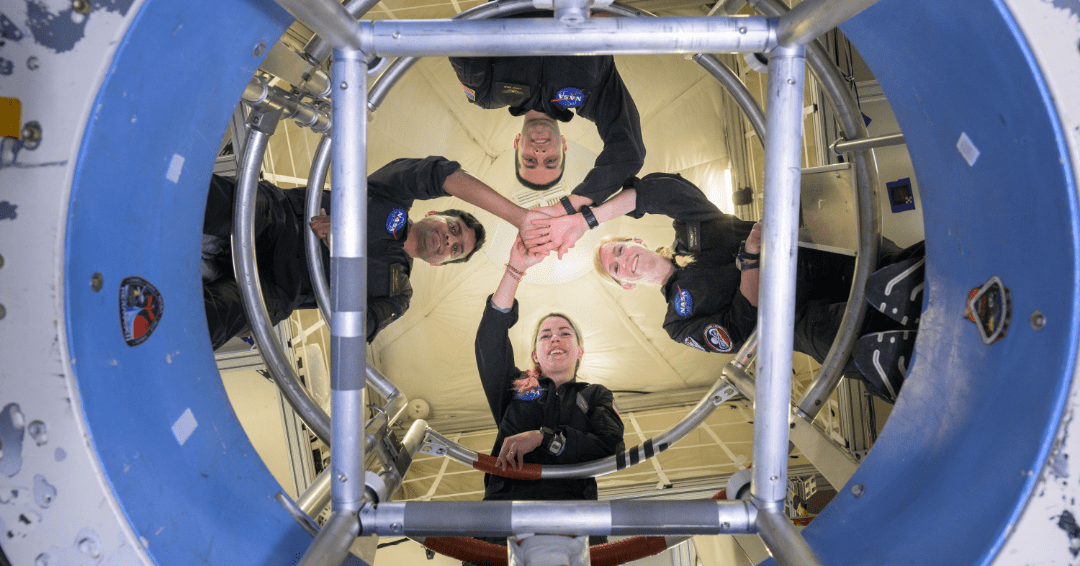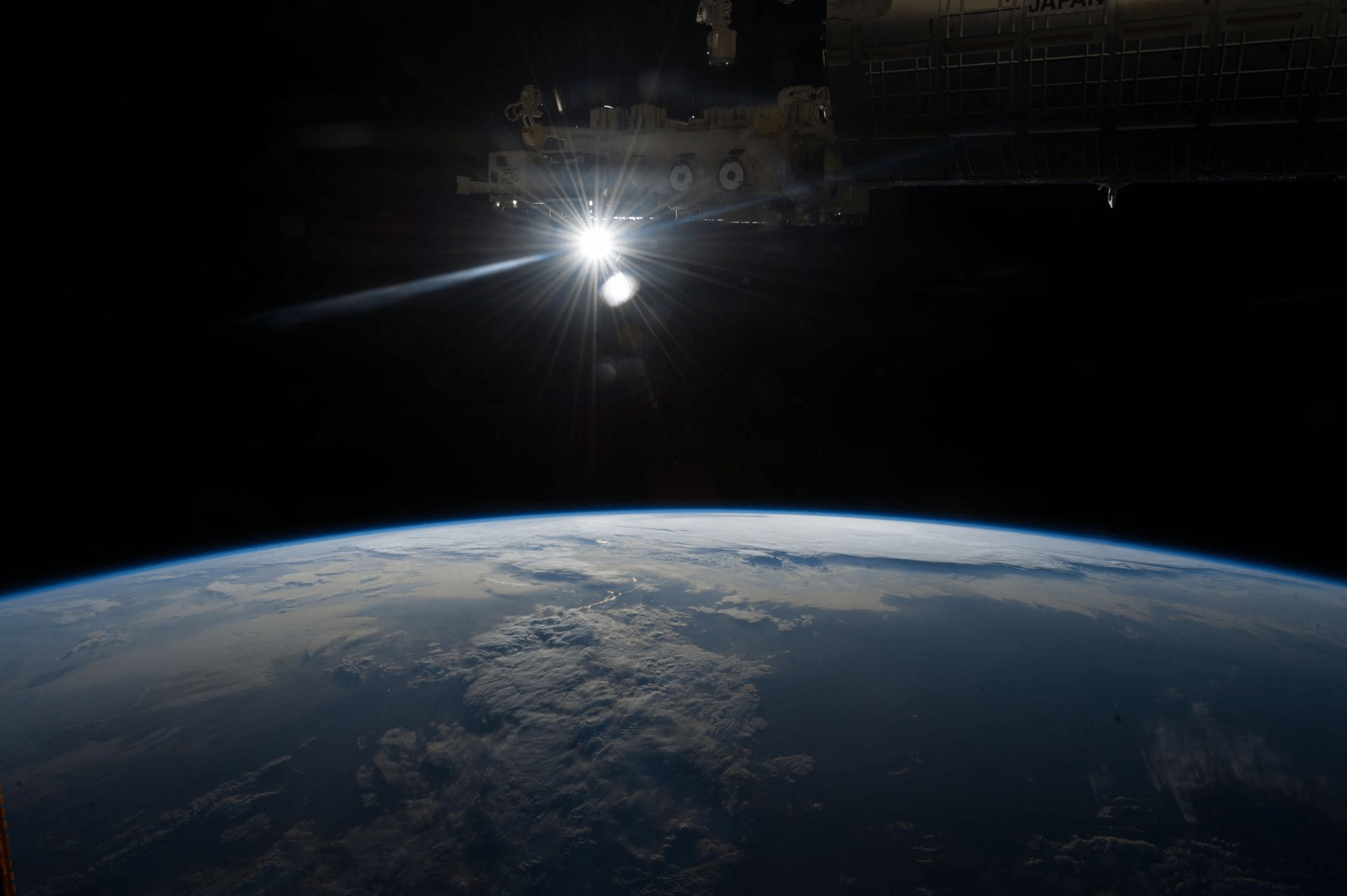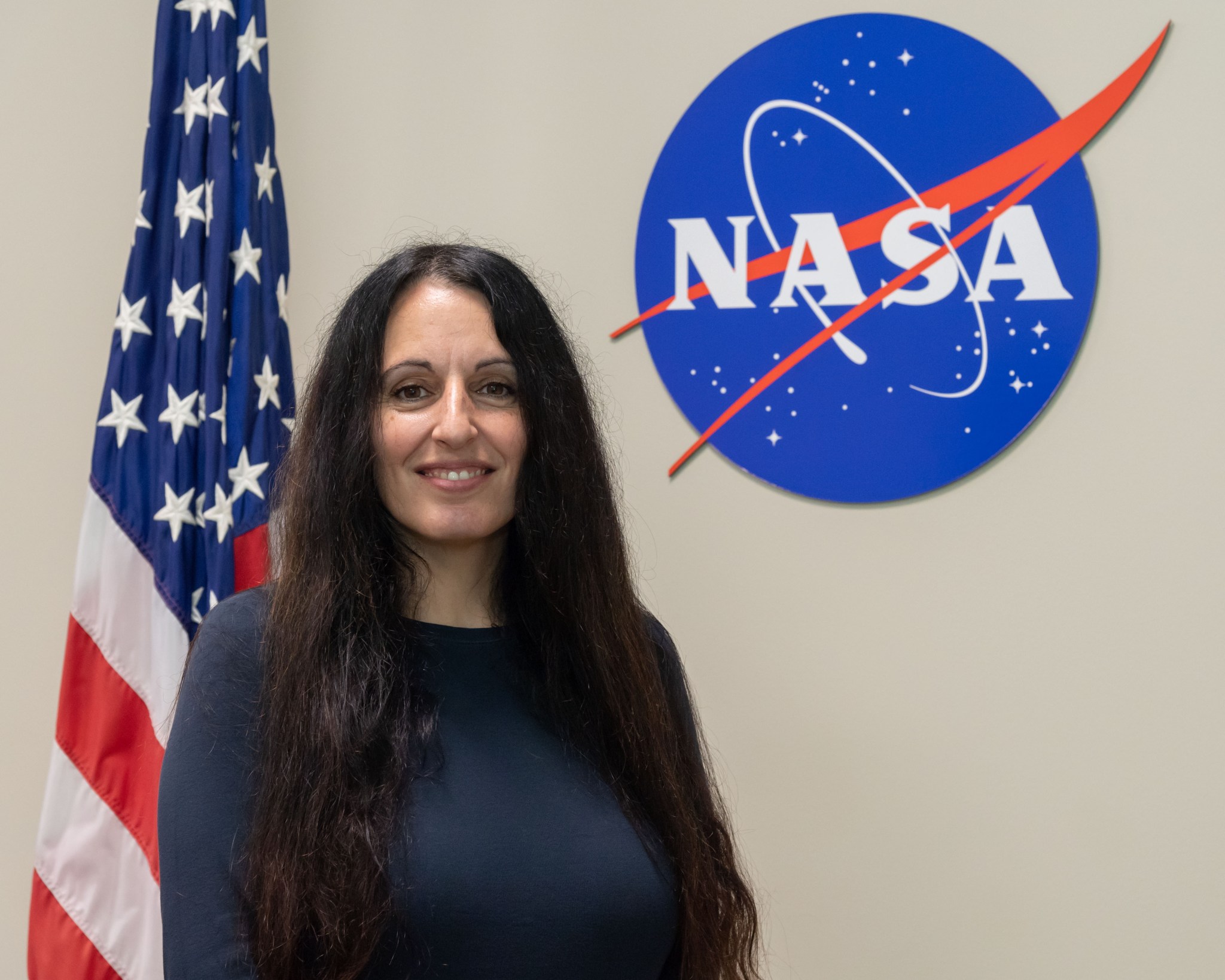2 min read Preparations for Next Moonwalk Simulations Underway (and Underwater) What are the dangers of going to space? For human spaceflight, the first thing I think about is the astronauts actually strapping themselves to a rocket. And if that isn’t dangerous enough, once they launch and they’re out into space in deep exploration, we have to worry about radiation. Radiation is coming at them from all directions. From the Sun, we have solar particles. We have galactic cosmic rays that are all over in the universe. And those cause…
Read MoreTag: Human Research Program
Wearable Tech for Space Station Research
5 Min Read Wearable Tech for Space Station Research A wearable monitoring device is visible on the left wrist of NASA astronaut Jeanette Epps. Credits: NASA Science in Space Nov 2024 Many of us wear devices that count our steps, measure our heart rate, track sleep patterns, and more. This information can help us make healthy decisions – research shows the devices encourage people to move more, for example – and could flag possible problems, such as an irregular heartbeat. Wearable monitors also have become common tools for research on…
Read MoreNASA Selects Crew for 45-Day Simulated Mars Mission in Houston
NASA has selected four new crew members to participate in the final simulated mission to Mars in 2024 inside the agency’s Human Exploration Research Analog. From left are Kristen Magas, Anderson Wilder, Obaid Alsuwaidi, and Tiffany Snyder. Credit: C7M4 Crew NASA selected a crew of four research volunteers to participate in its last simulated mission to Mars in 2024 within a habitat at the agency’s Johnson Space Center in Houston. Obaid Alsuwaidi, Kristen Magas, Tiffany Snyder, and Anderson Wilder will step into the 650-square-foot HERA (Human Exploration Research Analog) facility…
Read MoreSpooky on the Space Station
4 min read Preparations for Next Moonwalk Simulations Underway (and Underwater) Science in Space: October 2024 Cultures around the world celebrate Halloween on Oct 31. In many places, in addition to people wearing costumes and eating candy, this day is associated with spooky decorating using fake blood, skeletons, flies, and spiders, some of them glow-in-the-dark. Crew members on the International Space Station have been known to indulge in a bit of dressing up and candy consumption to mark the day, and the research they conduct year-round occasionally involves these iconic…
Read MoreNASA Astronauts, Leadership Visit Children’s Hospital, Cancer Moonshot Event
2 min read Preparations for Next Moonwalk Simulations Underway (and Underwater) NASA astronaut Yvonne Cagle and former astronaut Kenneth Cockrell pose with Eli Toribio and Rhydian Daniels at the University of California, San Francisco Bakar Cancer Hospital. Patients gathered to meet the astronauts and learn more about human spaceflight and NASA’s cancer research efforts. NASA/Brandon Torres Navarrete NASA astronauts, scientists, and researchers, and leadership from the University of California, San Francisco (UCSF) met with cancer patients and gathered in a discussion about potential research opportunities and collaborations as part of…
Read MoreNASA Funds Studies to Support Crew Performance on Long-Duration Missions
The crew of the Human Exploration Research Analog’s Campaign 7 Mission 1 clasp hands above their simulated space habitat’s elevator shaft. Credit: NASA NASA is funding 11 new studies to better understand how to best support the health and performance of crew members during long-duration spaceflight missions. The awardees will complete the studies on Earth without the need for samples and data from astronauts. Together, the studies will help measure physiological and psychological responses to physical and mental challenges that astronauts may encounter during spaceflight. The projects will address numerous spaceflight risks related…
Read MoreNASA-Funded Research Institute Selects New Class of Space Health Fellows
Earth as viewed from the International Space Station. Credit: NASA The NASA-funded Translational Research Institute for Space Health (TRISH) announced its selections for the institute’s 2024 postdoctoral fellowship, a space health program intended to launch the careers of a new generation of researchers tackling various challenges involved with human space exploration. The program supports early-career scientists pursuing research with the potential to reduce the health risks associated with spaceflight. Selected fellows will participate in TRISH’s Academy of Bioastronautics, a mentorship community for space health professionals, and receive a two-year salary…
Read MoreFrom Psychology to Space: Alexandra Whitmire’s Journey and Impact in NASA’s Human Research Program
From navigating the depths of the human mind to exploring the vastness of space, Dr. Alexandra (Sandra) Whitmire helps lead research on the effects of prolonged isolation and confinement as NASA prepares to voyage to the Moon and eventually Mars. Whitmire is the lead scientist for the Human Factors and Behavioral Performance element (HFBP) within NASA’s Human Research Program, or HRP. HFBP selects, supports, and helps design studies for Johnson Space Center’s HERA (Human Exploration Research Analog), which conducts missions simulating isolation and confinement to further understand psychological effects on…
Read MoreSpace Station Research Advances NASA’s Plans to Explore the Moon, Mars
4 Min Read Space Station Research Advances NASA’s Plans to Explore the Moon, Mars The full moon is pictured as the International Space Station orbited 254 miles above the Pacific Ocean northeast of Guam. Credits: NASA Space, the saying goes, is hard. And the farther humans go, the harder it can get. Some of the challenges on missions to explore the Moon and Mars include preventing microbial contamination of these destinations, navigating there safely, protecting crew members and hardware from radiation, and maintaining and repairing equipment. Research on the International…
Read MoreNASA Selects Crew for Next Simulated Mars Mission
NASA selected a crew of four for the agency’s next Human Exploration Research Analog mission, a simulated mission to Mars. From left are Abhishek Bhagat, Susan Hilbig, Kamak Ebadi, and Ariana Lutsic. Credit: HERA C7 Crew NASA selected a crew of four volunteers to participate in a simulated journey to Mars inside a habitat at the agency’s Johnson Space Center in Houston. Abhishek Bhagat, Kamak Ebadi, Susan Hilbig, and Ariana Lutsic will enter the ground-based HERA (Human Exploration Research Analog) facility on Friday, Jan. 26, to live and work like…
Read More